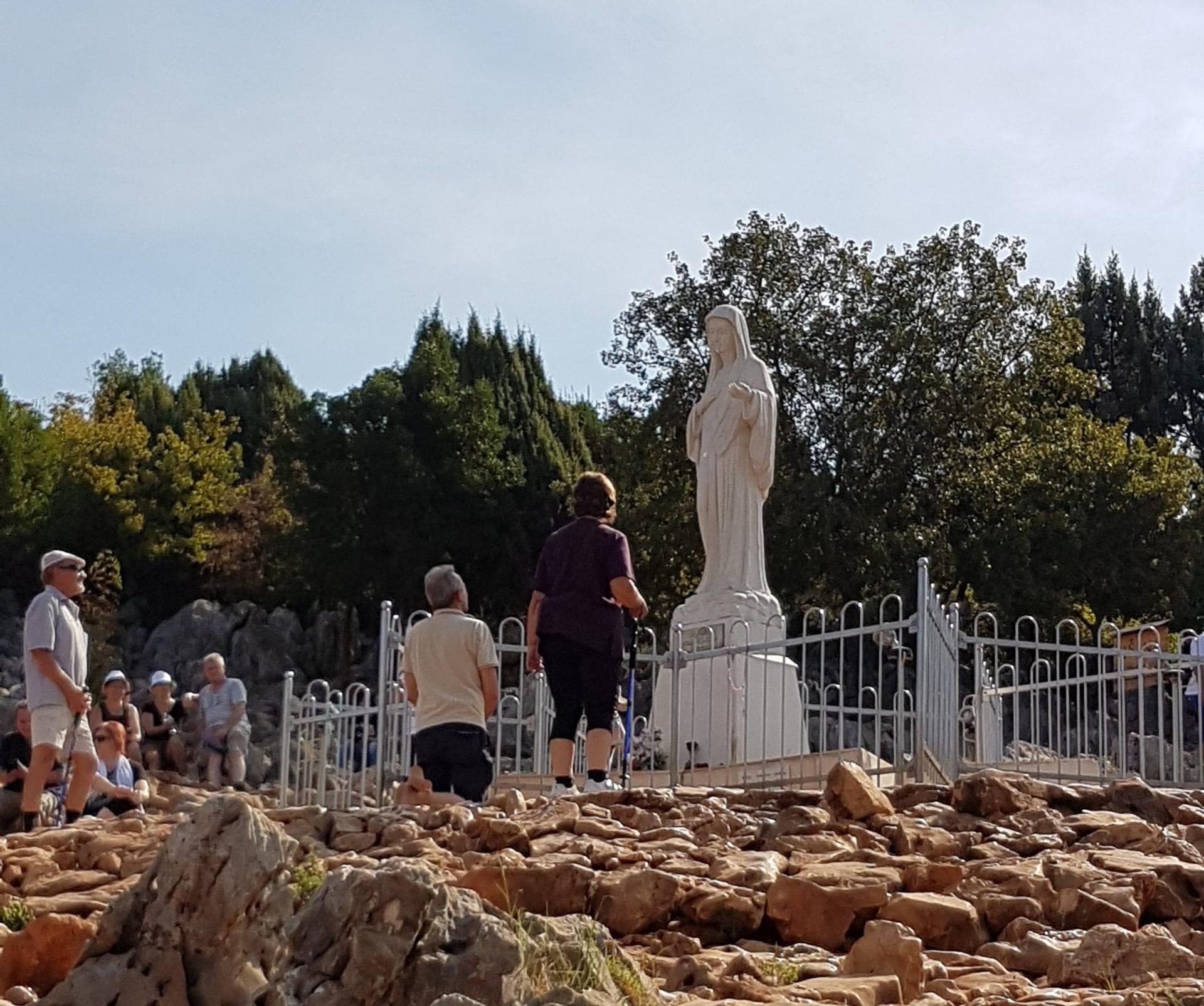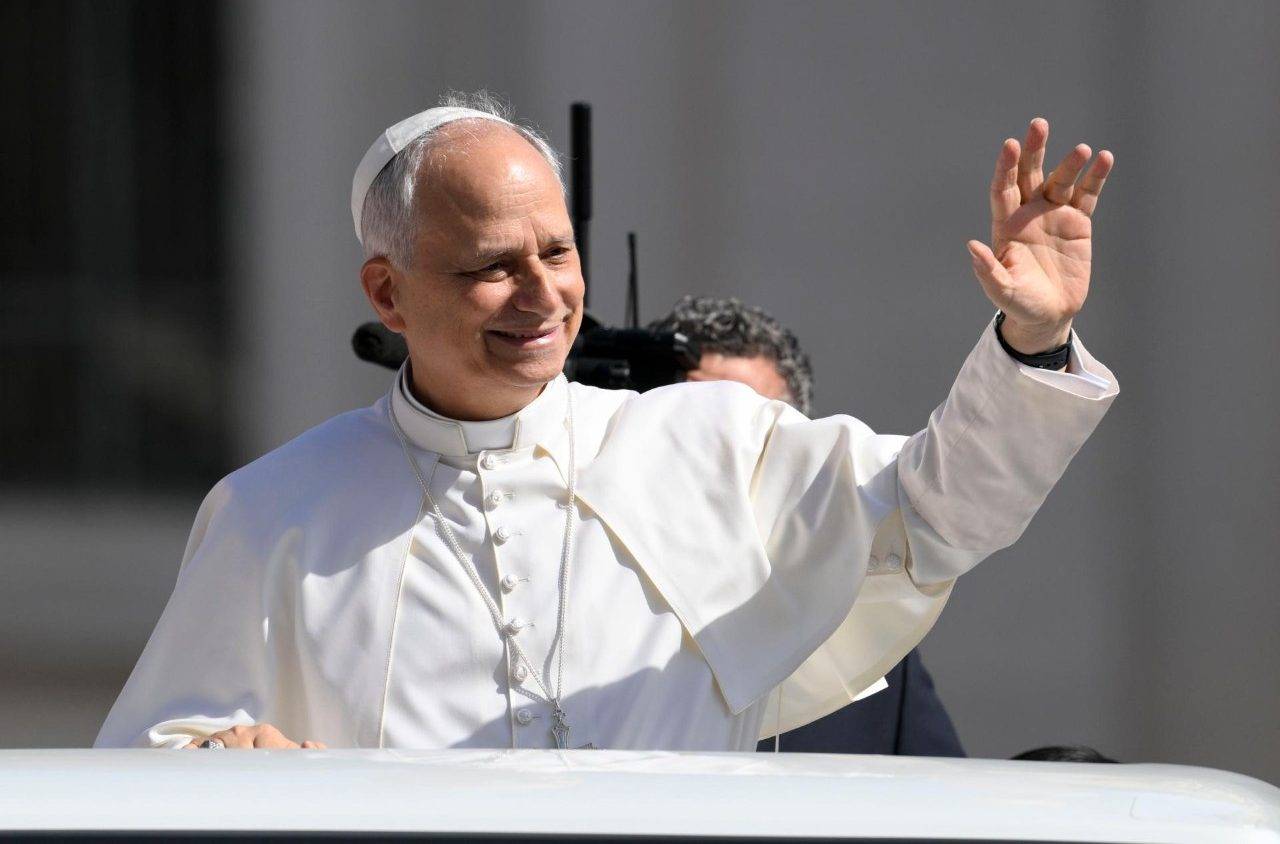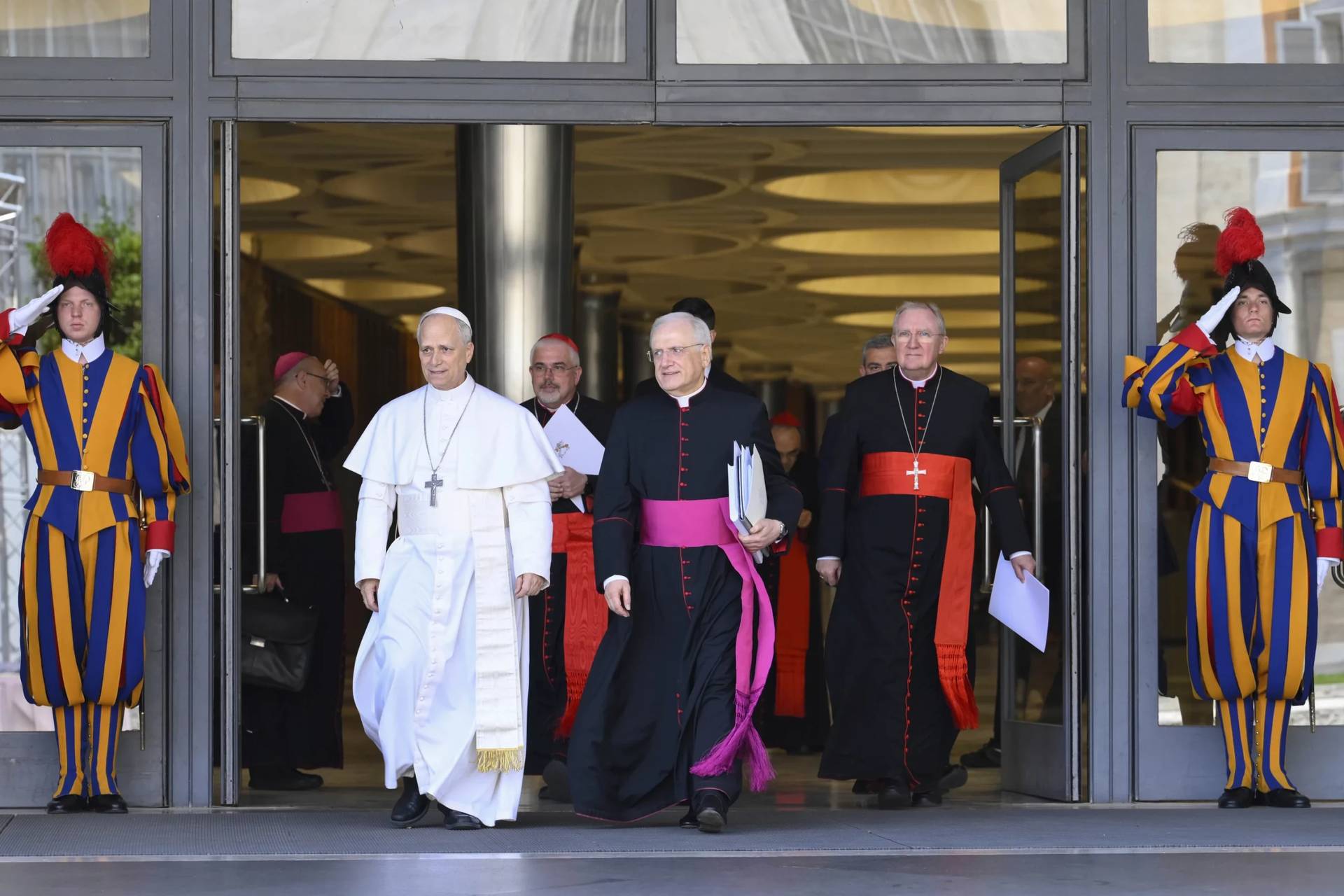MEDJUGORJE, Bosnia-Herzegovina — As a journalist covering the Vatican, I’ve obviously been aware for a long time of the debate that swirls around Medjugorje, the small town in Bosnia-Herzegovina where revelations of the Virgin Mary allegedly have been taking place since 1981.
I know that some take the phenomenon seriously, others are skeptical, and many are waiting for Rome to declare officially one way or the other.
Yet until last week, I’d never had the chance to see the place with my own eyes.
I went to Medjugorje with my parents, one of whom is a deep believer in the apparitions, the other not so much. On the day of our arrival, we went to Saint James church, knowing the Franciscans running the place were praying the Rosary before Mass, and that there’d be Eucharistic adoration after.
I was personally shocked to see the long lines for confession, despite there being 35 confessionals in seven different languages. I didn’t stop to count, but there must have been some 300 people in line at least.
I did, however, stop to chat with one of the Argentine priests who was waiting to replace another. Many priests who go with pilgrimage groups often register to hear confessions.
The one I spoke with told me he had arrived doubtful, mostly dragged by the faithful in his parish, which is the reason why he requested to remain unnamed. Yet after having spent the afternoon in the confessional, he couldn’t help but believe something supernatural was going on.
“No bad tree gives good fruits,” he told me, referencing a passage from the gospel of Matthew. He claimed that never, in the 30 years he’s been a priest, has he heard better confessions than here.
That, perhaps, is the defining insight one takes away from Medjugorje.
Whatever one makes of the voluminous revelations supposedly delivered by Mary over the years, or the ecclesiastical tensions that surround the site, what I saw tells me it’s awfully hard to argue with the spiritually positive experiences happening there on the ground.
Natural caution
As is well known, the Catholic Church is often slow to embrace novelty. At times that’s because its teachings, rooted in Scripture and tradition, prevent it. In other cases, it’s because it doesn’t want to yield to the pressures of what’s fashionable.
Most of the time, however, there’s a healthy dose of caution involved, backed by the feeling that certainty about something only comes with time — occasionally, literally, “’till Kingdom come.”
One classic example of that last category of caution is the phenomenon of apparitions, whether of Christ, his mother or some saints. To say that the Church is often hesitant about issuing official endorsements of such claims would be putting things mildly.
Often with an apocalyptic tint, Marian apparitions such as the ones in Lourdes or Fatima have long been accepted by the Church, even if they’re not presented as dogmatic truths as is the case with the Holy Trinity or Mary’s virginity.
In thinking about such things, the Church distinguishes between public and private revelation. The first, which comes from Scripture and Tradition, is considered complete. The Church can deepen its understanding of the “original deposit of faith,” as it did in declaring the dogma of the Immaculate Conception in 1854 for example, but in theory it can’t add to it.
Apparitions, on the other hand, fall under the heading of private revelation, even those addressed to the whole world such as Fatima. As such, it’s never a requirement of the faith that they be accepted.
Perhaps nowhere in the Catholic world in recent decades has the debate over the legitimacy of an apparition been more intense, or more protracted, than Medjugorje.
What the apparitions are about
Those who take the reported apparitions at face value believe the Virgin Mary, or the “Gospa,” as she’s affectionately known in Medjugorje, has been appearing in this small town 60 miles from Sarajevo, the capital of Bosnia Herzegovina, since June 24, 1981.
At the time, the place was an unexceptional farming community of some 400 Croatian families in the former Yugoslavia.
According to the lore, the Virgin first appeared daily to six young people aged between 10 and 17 at the time, but since 1989 has continued to do so only to some of them — twice a month: on the 2nd and the 25th.
Although the wording varies in each allocution, there are five key messages repeated over and over:
- Peace
- Faith
- Conversion
- Prayer
- Fasting
Peace between God and man, and between people is so central, that the visionaries claim the Virgin refers to herself as “Our Lady of Peace.”
For instance, on Sept. 1983, Mary allegedly said: “I have already said many times that the peace of the world is in a state of crisis. Become brothers among you, increase prayer and fasting in order to be saved.”
Early on, there were several messages directed at the local bishop, with the visionaries repeatedly urged to pray and fast for him, and various mentions of St. Pope John Paul II, with the Virgin once appearing holding a picture of him.
On Sept. 1982, for instance, Mary reportedly gave the teens a message for the pope: “Have him consider himself the father of all mankind, and not only of Christians. Have him spread untiringly and with courage the message of peace and love among all mankind.”
Satan, or the “evil one” is also present in the messages. For instance, on August 25th 2016 she allegedly said: “Little children, you are too bound to the earth and earthly things; that is why Satan is rolling you like the wind rolls the waves of the sea.”
Because of their quantity, there are many topics the messages touch on, including what to do with those who don’t believe in the apparitions. In 1981, when they had only just begun, one of the teens, Ivan Ivankovic, asked about putting the priests who don’t believe in them “on the right track.”
Mary allegedly responded: “It is necessary to tell them that, from the very beginning, I have been conveying the message of God to the world. It is a great pity not to believe in it. Faith is a vital element, but one cannot compel a person to believe. Faith is the foundation from which everything flows.”
Controversy
Although finding a resident in this small village of Bosnia Herzegovina who doesn’t believe that the Virgin appeared to six young adults over 30 years ago is a challenge, the country’s Catholic hierarchy has long been divided.
Many attribute the long delay in getting a Vatican verdict to that ambivalence among the local bishops, but there’s an even more basic factor at work. Generally speaking, for the Vatican to even consider issuing a finding on a reported apparition, the revelations have to be over, and in Medjugorje they’re definitely not.
Such waiting periods, by the way, aren’t terribly unusual. St. Bridget of Sweden had visions for a quarter century, St. Hildegard for 70 years and Our Lady of Laus allegedly appeared in France for 54 years in the late 1600s — yet this last apparition wasn’t formally recognized until 2008.
For 350 years, since a decree of Pope Urban VIII in 1625, the Church has severely forbidden any publication of the accounts of what are called “private revelation and visions” without special ecclesiastical approbation. This ban was imposed in an attempt to protect people from the dangers of “apparition enthusiasm” and delusion.
No matter what Rome might say, however, in the digital era keeping the messages of Medjurgorje hidden has proven impossible. There’s a site, www. medjugorje.org, collecting them all, and they’re quickly shared among hard-core devotees when new ones are published.
Many Catholic theologians agree that private revelations have to be approached with caution, keeping in mind the strong possibility of human illusion, self-deception, diabolical influence, and even outright fraud.
In the last five decades, the Church has overruled several hundreds of alleged private revelations.
As long as the apparitions are ongoing, the Vatican’s preferred course is to defer to the local bishop. The last two bishops of Mostar-Duvno, the diocese to which Medjugorje belongs, have said clearly that nothing supernatural is happening here.
When approached by Crux for comment, Bishop Ratko Perić politely but forcefully refused, answering simply that “there’s no interview about Medjugorje, which is in the hands of the Holy See.”
Yet he’s spoken and written about it before, discouraging pilgrims from visiting the site. In 2009 for instance, he wrote: “Through the ‘seers’, followed whole floods of lies, contradictions, promises, speed-ups, slowdowns, falsehoods, uncertainties.”
In that document the bishop also highlights various contradictions between the seers’ own accounts, and inconsistencies between the messages when studied chronologically.
One of the things Perić questions the most is the alleged “great sign” that was supposed to take place in Medjugorje for people to believe in it, together with the 10 apocalyptic messages the seers have received and are supposed to disclose only as the date of the occurrences comes closer. There’s little to no information on either, only that the “sign” will occur in the place where the apparitions began.
Several study commissions have tried to determine the veracity of the apparitions yet, according to Perić, the non-cooperation of the seers have thwarted the efforts of reaching a valid conclusion. He also says that the faithful can’t but be “confused and disappointed” by the “deceptions, uncertainties, and improbabilities” of the Medjugorje apparitions.
His predecessor was even more strongly opposed, once stating that he had “moral certitude that the Medjugorje events are a case of collective hallucination.”
Since the apparitions began, most of the “seers” of Medjugorje have moved to other countries. Some live in mansions, travel the world on paid speaking tours and one married a beauty queen. Critics of the phenomenon wonder how it could be that none of them had a religious vocation, as was the case of Sister Lucia in Fatima or Bernardette in Lourdes.
Adding fuel to the fire, in July 2010 Pope Benedict XVI defrocked Father Tomislav Vlasic, a Franciscan priest who served as a former “spiritual director” to the six visionaries, after a year-long probe into charges he exaggerated the apparitions and had fathered a child with a nun.
This was only one of the many clashes between the order of St. Francis, which is running the shrine, and the Vatican.
The Vatican, like the locals, is divided
Finding a Vatican official willing to go on the record, meaning to put their names behind their comments, about Medjugorje, either for or against, is like finding a needle in a haystack.
Over coffee or beer, there are bishops who call it “the work of the devil,” those who admit to having been there as true believers of the phenomenon, and those who question what came first: the chicken or the egg, by which they mean that the graces associated with the place are undeniable, but the alleged messages highly questionable.
When asked why the Vatican doesn’t do more to discourage the pilgrims until a final decision is made, one priest said that despite the many doubts surrounding it, he’s heard of many religious vocations being born there, but of no one losing their faith.
St. John Paul II, a big devotee of the Virgin, and who had as an apostolic motto “Totus Tuus [Maria],” meaning “All yours [Mary]” reportedly once told Bishop Paul Hnilica: “If I were not the pope, I would probably have visited Medjugorje by now.”
Several other bishops, including Bishop Michael Pfiefer who in 1988 was in San Angelo, Texas, have been quoted saying the Polish pope privately supported, or at least didn’t oppose, people visiting the site, arguing that many pilgrims seek in Medjugorje a response to their search for the supernatural, and find it there through prayer, penance and fasting.
That seems to be the general position: The spiritual fruits are undeniable, but the seers are, at best, questionable.
Back in 1998, then-Archbishop Tarciso Bertone, at the time the number two official under Cardinal Joseph Ratzinger, later Pope Benedict XVI, of the Congregation for the Doctrine of the Faith (CDF), sent a letter to the bishops of Yugoslavia saying that, while waiting for a final decision on the matter, pilgrimages to Medjugorje are permitted “on condition that they are not regarded as an authentication of events still taking place.”
Two years earlier, Bertone had sent a letter to a French bishop saying that official pilgrimages to this town, understood as a “place of authentic Marian apparitions,” however, “are not permitted to be organized either on the parish or on the diocesan level.”
In 2013, during Francis’s papacy, the Vatican representative in the United States sent a letter to every diocese, in the name of the CDF, saying that Catholics “are not permitted to participate in meetings, conferences or public celebrations during which the credibility of such ‘apparitions’ would be taken for granted.”
In 2010, under Benedict, the Vatican set up a commission to study the Medjugorje question. Five years later, on June 6, 2015, Pope Francis told reporters that “we’ve reached the point of making a decision and then they will say.” But over a year later, nothing has been said.
Only days later, during one of his morning Masses, Francis cautioned against basing one’s faith solely on predicted visions or anything other than Christ himself.
Until the Vatican makes that decision public, however, its position remains the one defined by Bertone in 2008, when the CDF deferred authority over the matter not to the bishop of Mostar but to a 1991 document of the Yugoslavian Bishops Conference, which says that “the Church is not in a hurry” to reach a conclusion.
“We, the bishops, after three years of examination by the Commission, have declared Medjugorje a place of prayer and a Marian sanctuary,” they continue, saying they’re not opposed to people making pilgrimages to the site. “As to the supernatural character of the apparitions, we have declared: Up to this moment, we cannot affirm it.”
Among the supporters of the alleged apparitions of Our Lady of Peace in Medjugorje, one can find several “heavy hitters:”
- Recently deceased Father Gabriele Amorth, Rome’s longtime chief exorcist. In a YouTube video he clearly states that the Madonna of Medjugorje has come to “bring the world back to God,” after Satan’s great success of building a “cultural world without God.”
- Cardinal Hans Urs von Balthasar, regarded by Benedict XVI as the greatest theologian of the 20th century, who once said: “The theology of Medjugorje rings true. I am convinced of its truth. Everything concerning Medjugorje is authentic from a Catholic point of view.”
- Padre Pio, who reportedly once told a group of pilgrims from Mostar that the Virgin would appear in their land before it actually happened.
- Cardinal Cristoph Schönborn, of Austria, and a close collaborator of Francis, who believed in it enough to perform a personal pilgrimage back in 2009, and although he hasn’t turn into a crusader in favor of it, he hasn’t publicly spoken against it either.
What’s in Medugorje
The town itself was barely more than a village in 1981, and has since grown to become one big hotel, with restaurants and religious shops being the only commercial activity at hand.
Some of its detractor say that it’s a tourist trap in a country that still has the fresh memory of a bloody war (1992-1995) that forever changed its demography and constitution. The alleged apparitions allowed Medjugorje a unique opportunity to boost its otherwise non-existent tourist trade, with an estimated 30 million pilgrims arriving since they began — on average, a million a year and growing steadily.
Yet the holy industry of Medjugorje is in no way unique. From Rome’s St. Peter’s Square to Lourdes, vendors of endless religious articles, from an image of the Virgin to bobbing pope heads are always part of the scenery at any major Catholic venue.

When one arrives in Medjugorje, every hotel works like a pilgrim center, with information about Mount Podbrdo, also known as the “apparition hill,” and the Saint James church’s schedule readily available in many languages.
The Podbrdro is a steep and rock-strewn path that ascends to the actual location where the Virgin allegedly first appeared, and at times continues to do so.

Maybe this is enough
The Mass we attended was actually celebrated behind the church, where the altar is flanked by two giant screens. Some 3,000 people from around the globe remained for three hours, as everything unfolded in Croatian (including the 25-minute homily). It was a Thursday.

During the Consecration, all three of us heard bone-chilling screams coming from somewhere in the vicinity. No one around us seemed to find the screaming to be odd, while I personally had the feeling someone was being murdered.
I asked the couple sitting next to me, whom I recognized from our hotel, about it. They told me they had heard the screaming during a previous trip, and that the books available on the site say they are demons screaming. It happened again during Adoration.
We went up the Podbrdro on our second day there. On our way to the top, we encountered several groups from all over the world, from the US to Ukraine, and many people going up alone. Most were praying the Rosary, stopping at the stations located along the path commemorating the Joyful, Sorrowful and Glorious mysteries.
Dozens went up barefoot, either asking for a particular intention or giving thanks for graces already received. Chiara, from Rome, was going up to give thanks because her son had been ordained. A couple from Canada had made the pilgrimage because their two-year old son had survived a rare disease. John, a Croatian tourist guide working in Dubrovnik, told me he and his wife have gone several times praying for a baby that hasn’t yet come.
All in all, I didn’t feel much different here than I did in Lourdes or Fatima, nor did the people I encountered seem all that different either.
Although there are some “hard-core” believers who could recite half of the supposed messages in full, most didn’t seem to have any personal investment in the details of the apparitions: Those I spoke with couldn’t say with certainty how many visionaries there are, and much less knew their names.
They saw it as a pilgrimage site and a conduit for prayer. Considering the state of faith in today’s world, perhaps that’s enough.
















